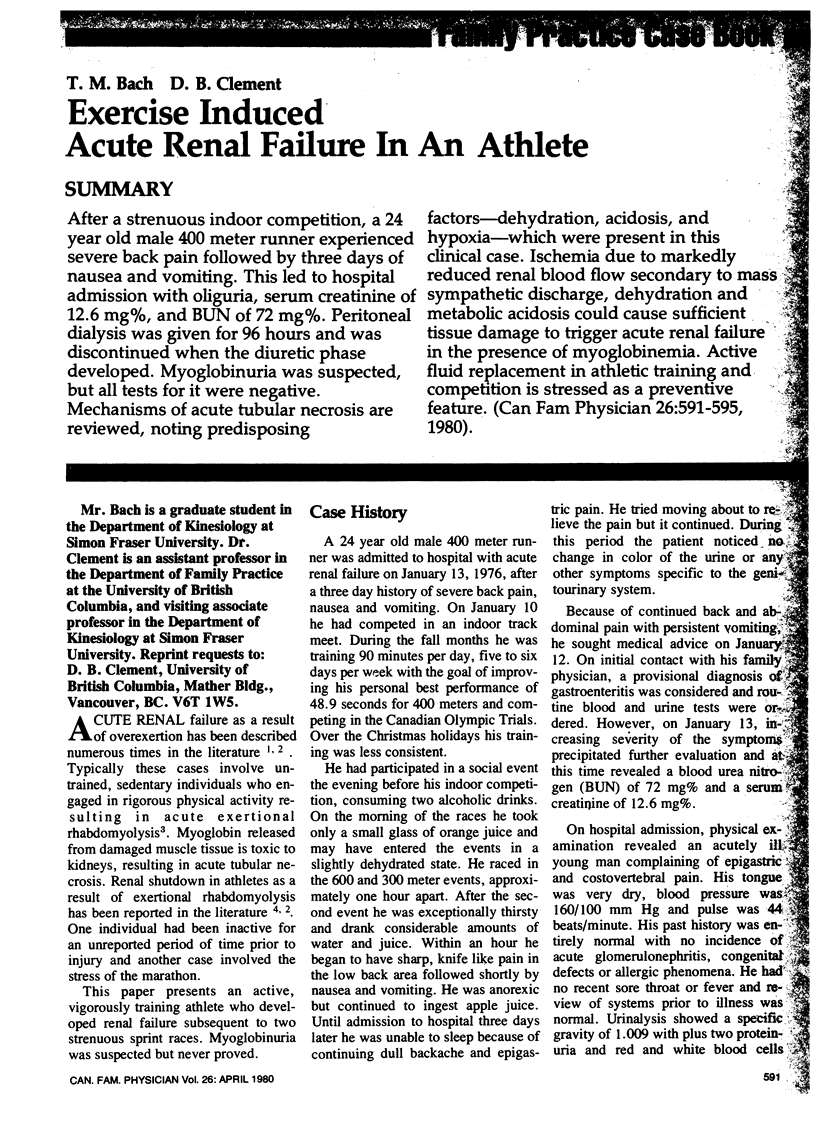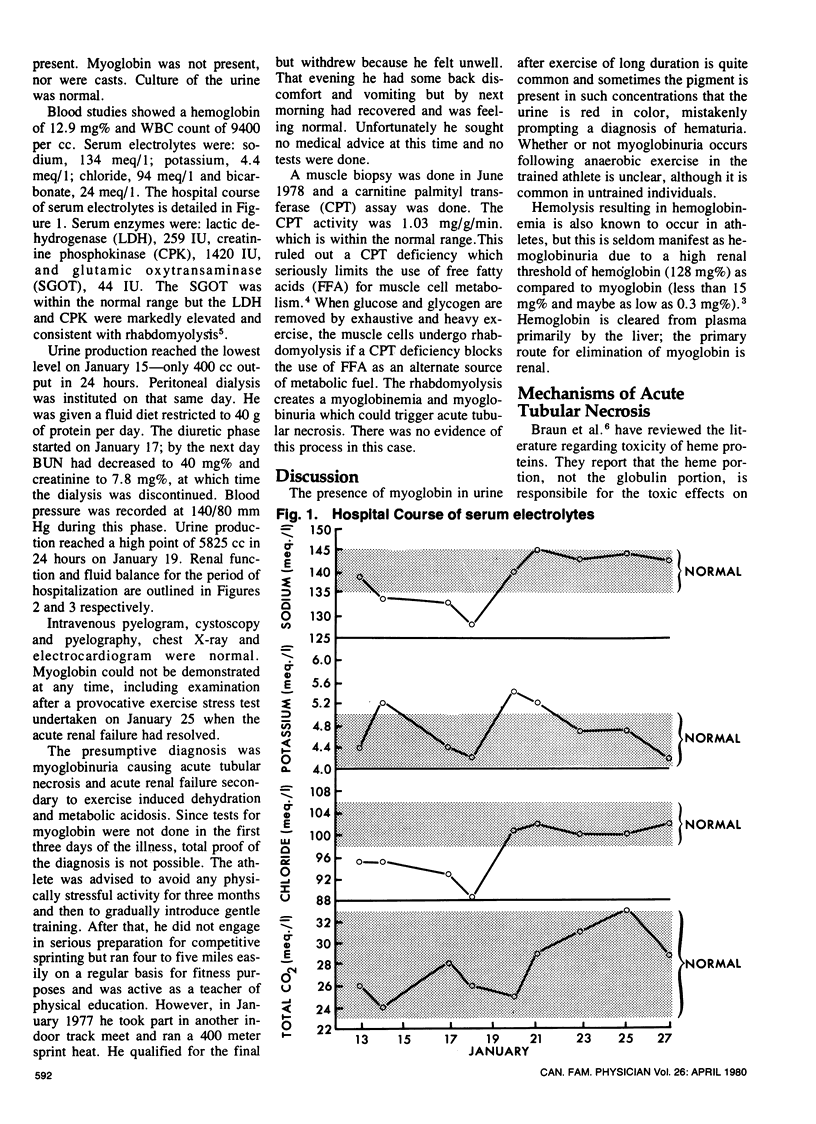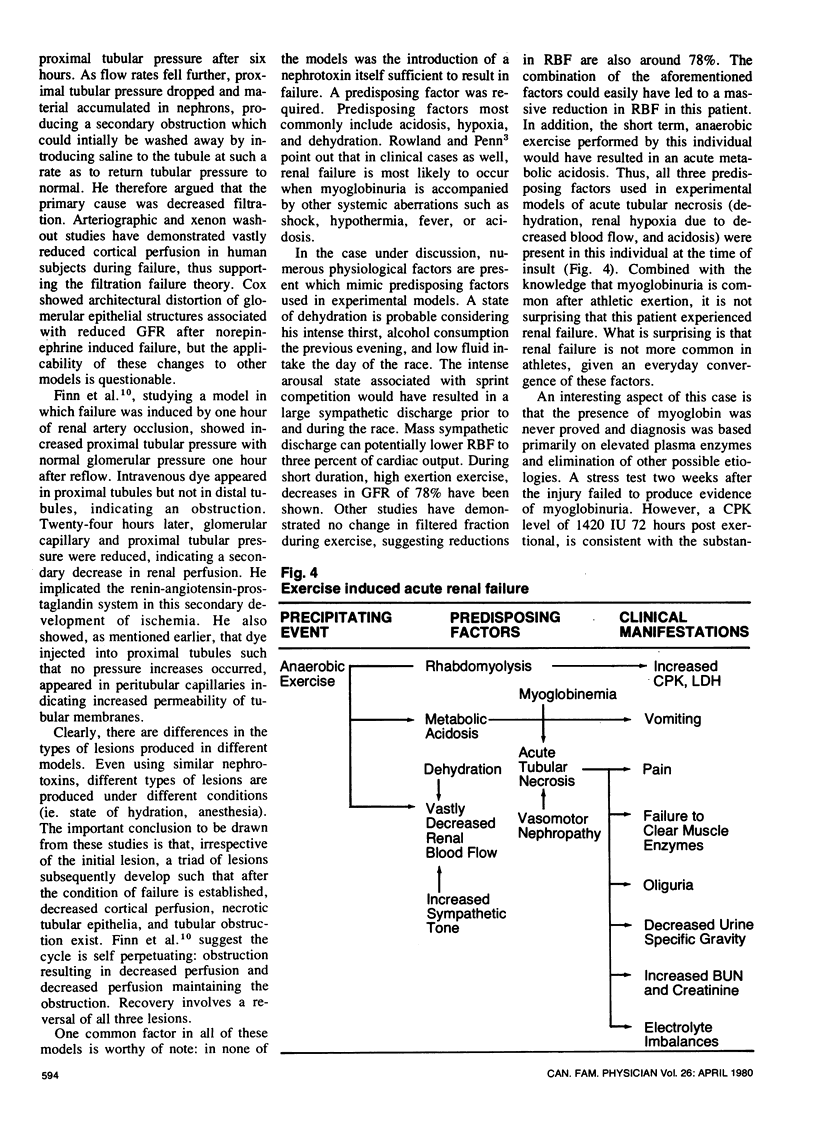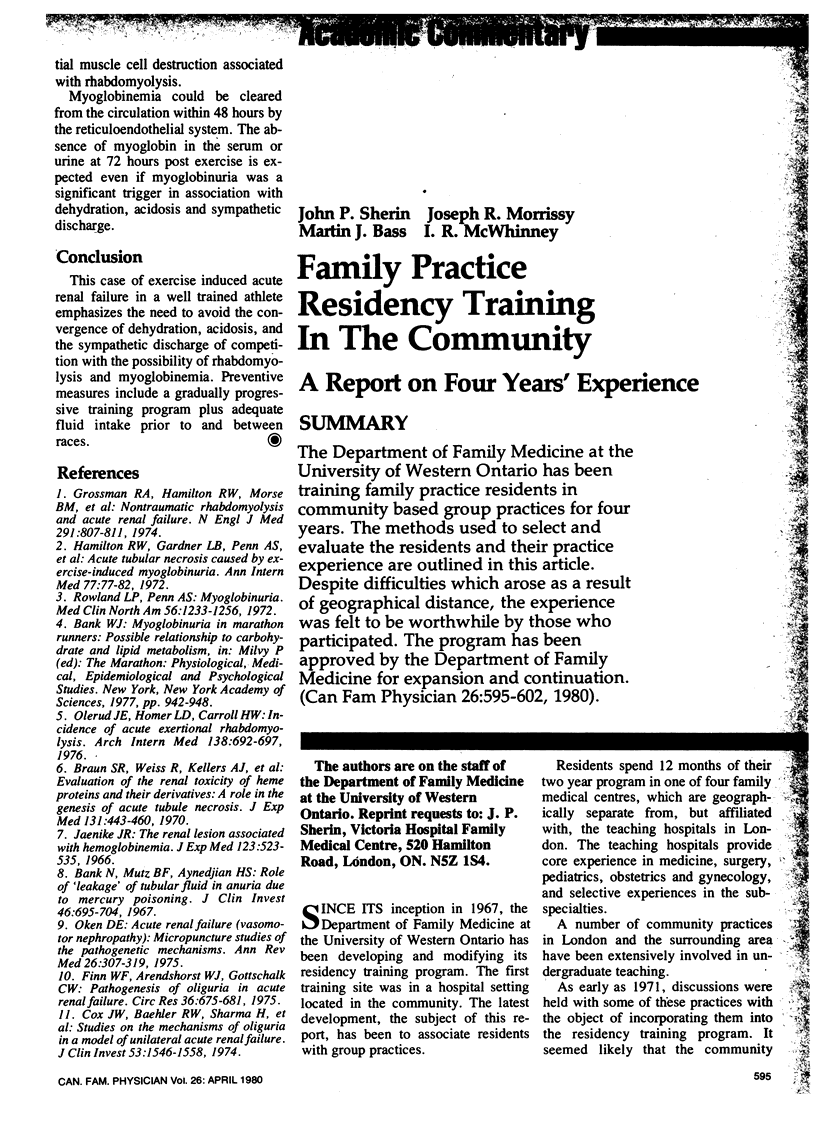Abstract
After a strenuous indoor competition, a 24 year old male 400 meter runner experienced severe back pain followed by three days of nausea and vomiting. This led to hospital admission with oliguria, serum creatinine of 12.6 mg%, and BUN of 72 mg%. Peritoneal dialysis was given for 96 hours and was discontinued when the diuretic phase developed. Myoglobinuria was suspected, but all tests for it were negative. Mechanisms of acute tubular necrosis are reviewed, noting predisposing factors—dehydration, acidosis, and hypoxia—which were present in this clinical case. Ischemia due to markedly reduced renal blood flow secondary to mass sympathetic discharge, dehydration and metabolic acidosis could cause sufficient tissue damage to trigger acute renal failure in the presence of myoglobinemia. Active fluid replacement in athletic training and competition is stressed as a preventive feature.
Full text
PDF




Selected References
These references are in PubMed. This may not be the complete list of references from this article.
- Bank N., Mutz B. F., Aynedjian H. S. The role of "leakage" of tubular fluid in anuria due to mercury poisoning. J Clin Invest. 1967 May;46(5):695–704. doi: 10.1172/JCI105570. [DOI] [PMC free article] [PubMed] [Google Scholar]
- Braun S. R., Weiss F. R., Keller A. I., Ciccone J. R., Preuss H. G. Evaluation of the renal toxicity of heme proteins and their derivatives: a role in the genesis of acute tubule necrosis. J Exp Med. 1970 Mar 1;131(3):443–460. doi: 10.1084/jem.131.3.443. [DOI] [PMC free article] [PubMed] [Google Scholar]
- Cox J. W., Baehler R. W., Sharma H., O'Dorisio T., Osgood R. W., Stein J. H., Ferris T. F. Studies of the mechanism of oliguria in a model of unilateral acute renal failure. J Clin Invest. 1974 Jun;53(6):1546–1558. doi: 10.1172/JCI107705. [DOI] [PMC free article] [PubMed] [Google Scholar]
- Finn W. F., Arendshorst W. J., Gottschalk C. W. Pathogenesis of oliguria in acute renal failure. Circ Res. 1975 Jun;36(6):675–681. doi: 10.1161/01.res.36.6.675. [DOI] [PubMed] [Google Scholar]
- Grossman R. A., Hamilton R. W., Morse B. M., Penn A. S., Goldberg M. Nontraumatic rhabdomyolysis and acute renal failure. N Engl J Med. 1974 Oct 17;291(16):807–811. doi: 10.1056/NEJM197410172911601. [DOI] [PubMed] [Google Scholar]
- Hamilton R. W., Gardner L. B., Penn A. S., Goldberg M. Acute tubular necrosis caused by exercise-induced myoglobinuria. Ann Intern Med. 1972 Jul;77(1):77–82. doi: 10.7326/0003-4819-77-1-77. [DOI] [PubMed] [Google Scholar]
- Jaenike J. R. The renal lesion associated with hemoglobinemia. I. Its production and functional evolution in the rat. J Exp Med. 1966 Mar 1;123(3):523–535. doi: 10.1084/jem.123.3.523. [DOI] [PMC free article] [PubMed] [Google Scholar]
- Oken D. E. Acute renal failure (vasomotor nephropathy): micropuncture studies of the pathogenetic mechanisms. Annu Rev Med. 1975;26:307–319. doi: 10.1146/annurev.me.26.020175.001515. [DOI] [PubMed] [Google Scholar]
- Olerud J. E., Homer L. D., Carroll H. W. Incidence of acute exertional rhabdomyolysis. Serum myoglobin and enzyme levels as indicators of muscle injury. Arch Intern Med. 1976 Jun;136(6):692–697. doi: 10.1001/archinte.136.6.692. [DOI] [PubMed] [Google Scholar]
- Rowland L. P., Penn A. S. Myoglobinuria. Med Clin North Am. 1972 Nov;56(6):1233–1256. doi: 10.1016/s0025-7125(16)32319-7. [DOI] [PubMed] [Google Scholar]


